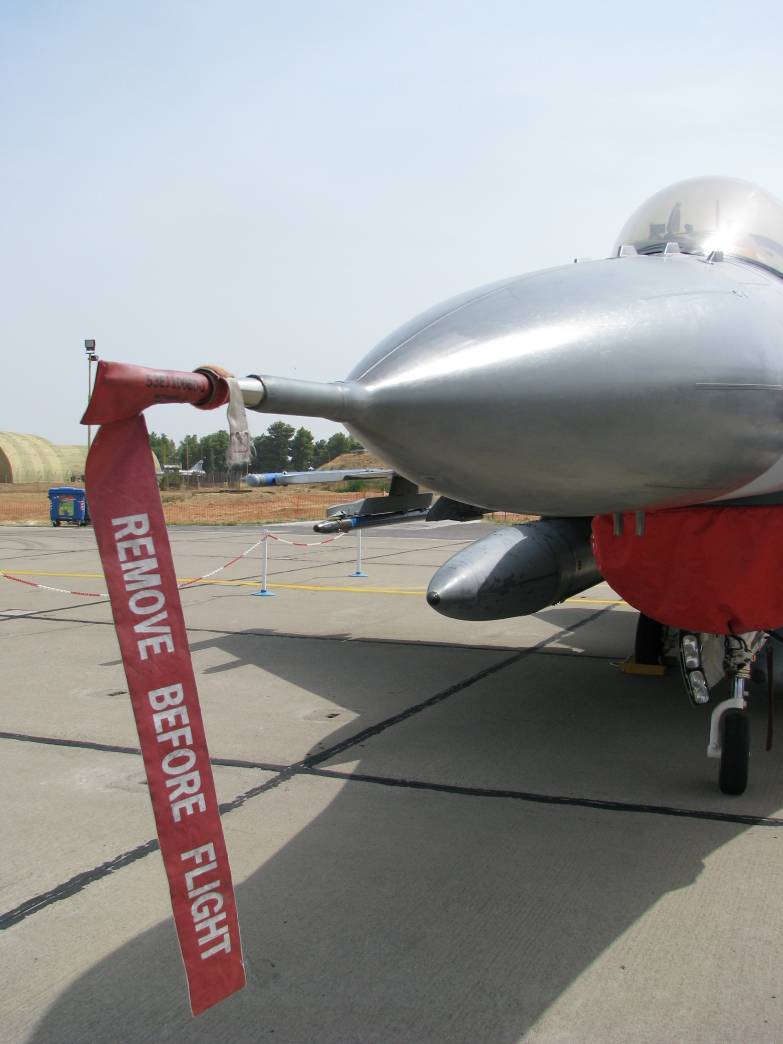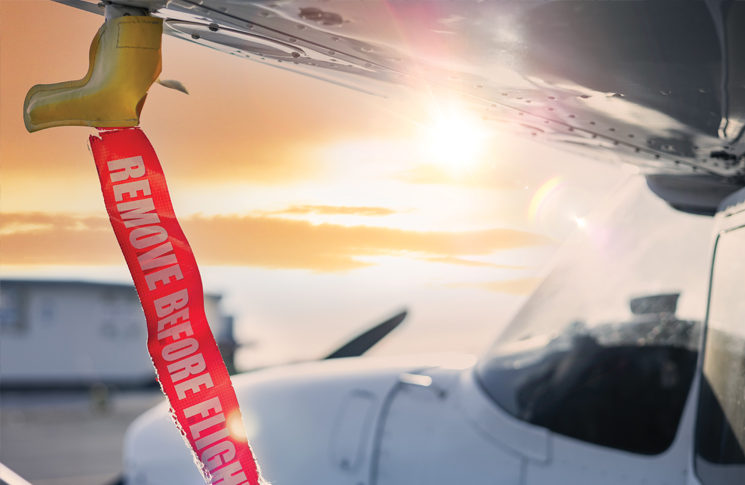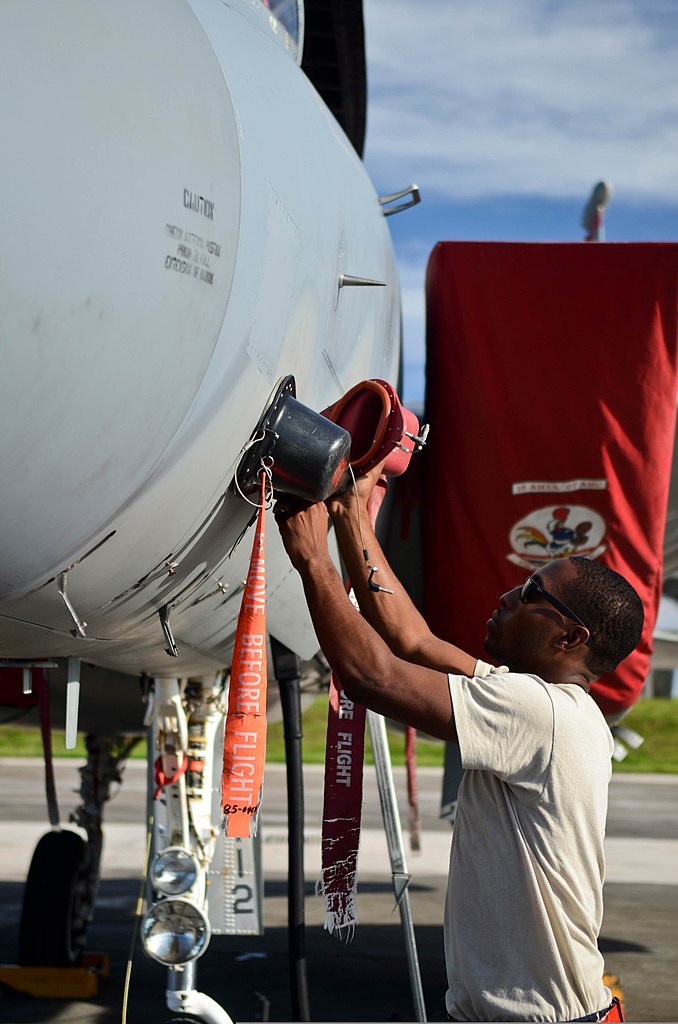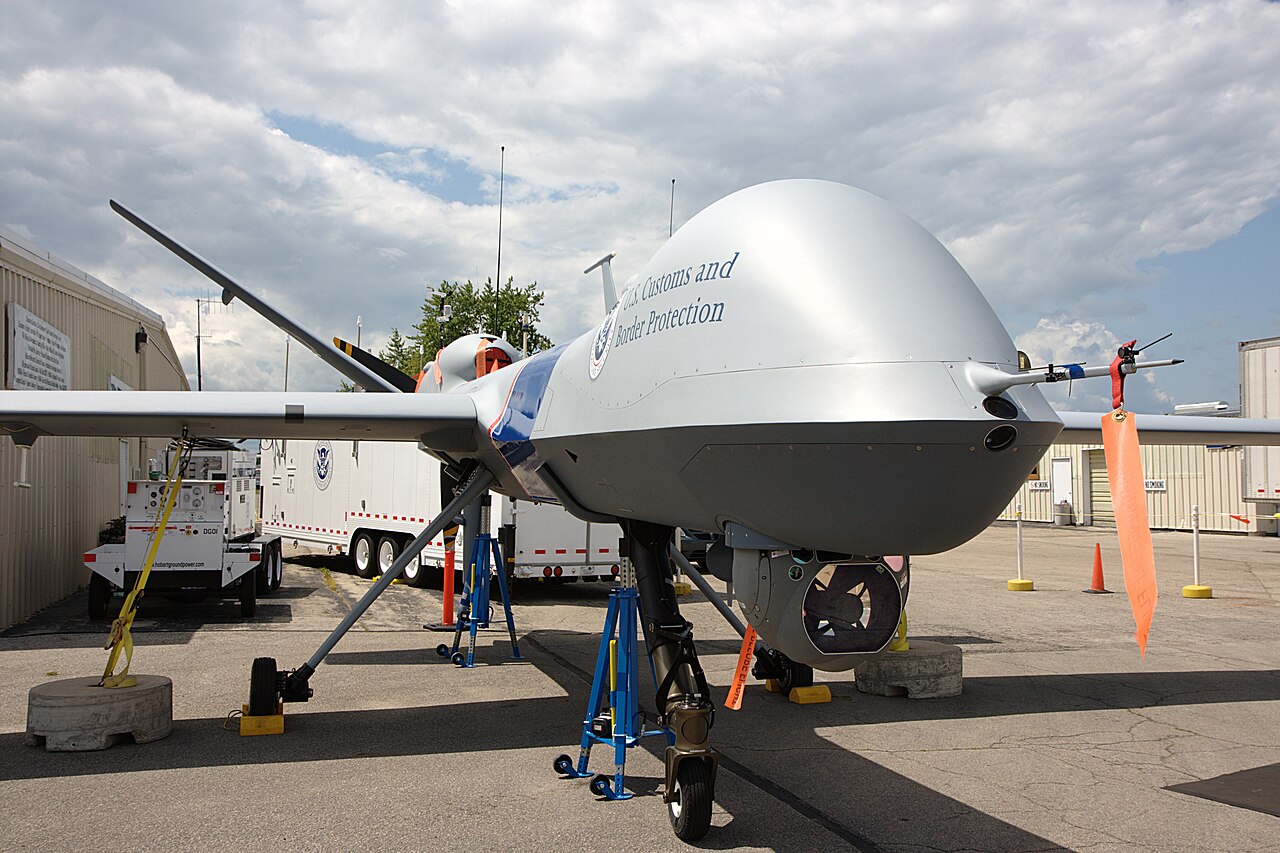
“Remove Before Flight” is a nifty, powerful badge (a “tag” rather) that plays a vital role in ensuring safe air travel. A passenger aboard an aircraft might not have seen the “Remove Before Flight” tag as it is, as the name suggests, “removed before the aircraft is about to take off”. But a person working in aviation maintenance might have seen it hanging from various parts of an aircraft- including engines, doors, and other essential components.
Let’s dive into the details and uncover the mystery behind why this badge is so significant, why it must be removed from the item it is tethered to before an airplane takes off, along its seemingly simple yet crucial element.

Photo: Robert Dimov | Wikimedia Commons
What does the “REMOVE BEFORE FLIGHT” tag look like?
The background fabric of the rectangular-shaped “REMOVE BEFORE FLIGHT” tag is sparklingly eye-catching such as bright red, fluorescent orange, or yellow. It measures around 12-18 inches in length and within this quadrate tag are lodged the letters “REMOVE BEFORE FLIGHT”, boldly in white contrasts.
So the tag’s message couldn’t be written in more clear and concise terms. This oblong badge is attached to the various parts of the aircraft using a small metal or plastic ring, making it easy to spot and remove.

Significance of the “REMOVE BEFORE FLIGHT” tag
Essentially, the tag is a visual reminder to the aircraft’s crew and ground staff to perform a critical pre-flight check before takeoff. This check involves verifying that all necessary systems and equipment – including the likes of fuel levels, landing gear, flaps, and other crucial components – are in proper working condition.
The tag also serves as a simple yet effective tool to deter mishaps such as part failures or downright catastrophic accidents like a complete shutdown of aircraft or even jeopardize the safety of passengers and crew members.
But that’s not all – the badge is also a common sight in the aerospace industry, with a wide range of applications beyond just aircraft. For example, it’s often used to secure satellite launch vehicles, missiles, and other critical hardware during transport and storage.

What are the “REMOVE BEFORE FLIGHT” tags attached to?
The “REMOVE BEFORE FLIGHT” tags are affixed to the protective covers or pins of the various parts of an aircraft which include the likes of rather small devices such as pitot tubes alongside larger ones like entire engines. The tag is only in place when the aircraft is on the ground, parked, or taxiing. The pins and covers where the tag is placed prevent the movement of its mechanical parts.
These tags are also commonly placed on stoppers meant to block openings on an aircraft (exhaust covers, shades, plugs, etc.). The cleanliness of those openings is essential for proper aircraft operation; those openings would otherwise be vulnerable to small animals or insects, trash, or weather conditions, or other foreign objects if left open.

An aircraft that is grounded or has other issues might not take to the skies and be left idle for several days. In such cases, personnel responsible for aircraft maintenance will cover large parts of it such as engines or propellers. These covers inevitably have the “REMOVE BEFORE FLIGHT” tag. Proper storage or shielding of the aforementioned parts aids in the longevity of the aircraft.
It is the aircraft mechanics who are well-versed with all the parts of an aircraft where the “REMOVE BEFORE FLIGHT” tag is attached. While inspecting these mechanical birds, and the glaringly reddish tags thereof, leaving protective covers on a tube or engine can cause delays as well as structural malfunctions.

Incidents that highlight the importance of the “REMOVE BEFORE FLIGHT” tag
There have been a couple of instances where the non-removal of the “REMOVE BEFORE FLIGHT” tag has caused a few accidents.
Aeroperú Flight 603
Aeroperu Flight 603 was a flight heading from Miami International Airport (MIA) to Arturo Merino Benítez International Airport in Santiago, Chile (SCL). The aircraft crashed into the ocean killing 70 people on board.
Investigation revealed that some portion of the plane’s static ports on the underside of the fuselage were covered by adhesive tapes. These ports are integral to the instruments that determine the aircraft’s speed and altitude. However, the adhesive tapes need to be removed after washing and polishing a plane.

However, an employee of Aeroperu by the name of Eleuterio Chacaliaza had forgotten to remove the tape after washing and polishing the plane. In most aircraft, these static ports are enveloped by covers that have “REMOVE BEFORE FLIGHT” written on them. But the twenty-three-year-old Boeing 757-23A, which was registered as N52AW did not.
As a result of this error, the pilots and the air traffic controllers had no idea about the true altitude or the speed of the aircraft. When the readings in the instruments of the Aeroperu Flight 603 became erratic, the crew decided an emergency landing. Unfortunately, the flight was over the waters of the Pacific Ocean, and with no visual clues, the flight crashed and killed all people on board. The victims were awarded a compensation of $29 million.

1975 Royal Nepal Airlines Pilatus PC-6 Porter crash
Edmund Hillary, the mountaineer who built the most dangerous airport in the world i.e., Lukla Airport, lost his wife as well as his daughter to an accident where the pilot had forgotten to get rid of the “REMOVE BEFORE FLIGHT” tag as well.

Photo: brewbooks | Wikimedia Commons
The aircraft in question was a Pilatus PC-6 Porter and was piloted by Peter Shand, who had not completed a walk-around of the aircraft. As a result, he’d failed to observe that the aileron was fixed by a ground lock pin. [The “REMOVE BEFORE FLIGHT” are usually hinged on these pins.] The aircraft crashed shortly after takeoff.
It later came as a surprise to many that Shand was hired by Nepalese Airlines to fly the Pilatus despite having been fired from South Africa due to carelessness.
Conclusion
These two accidents are glaring examples of how crucial the “REMOVE BEFORE FLIGHT” tag is in procuring the safety of an aircraft. So next time you spot this red tag as a souvenir or as a keychain, you might have some inkling as to how crucial it is for the maintenance of an aircraft.
